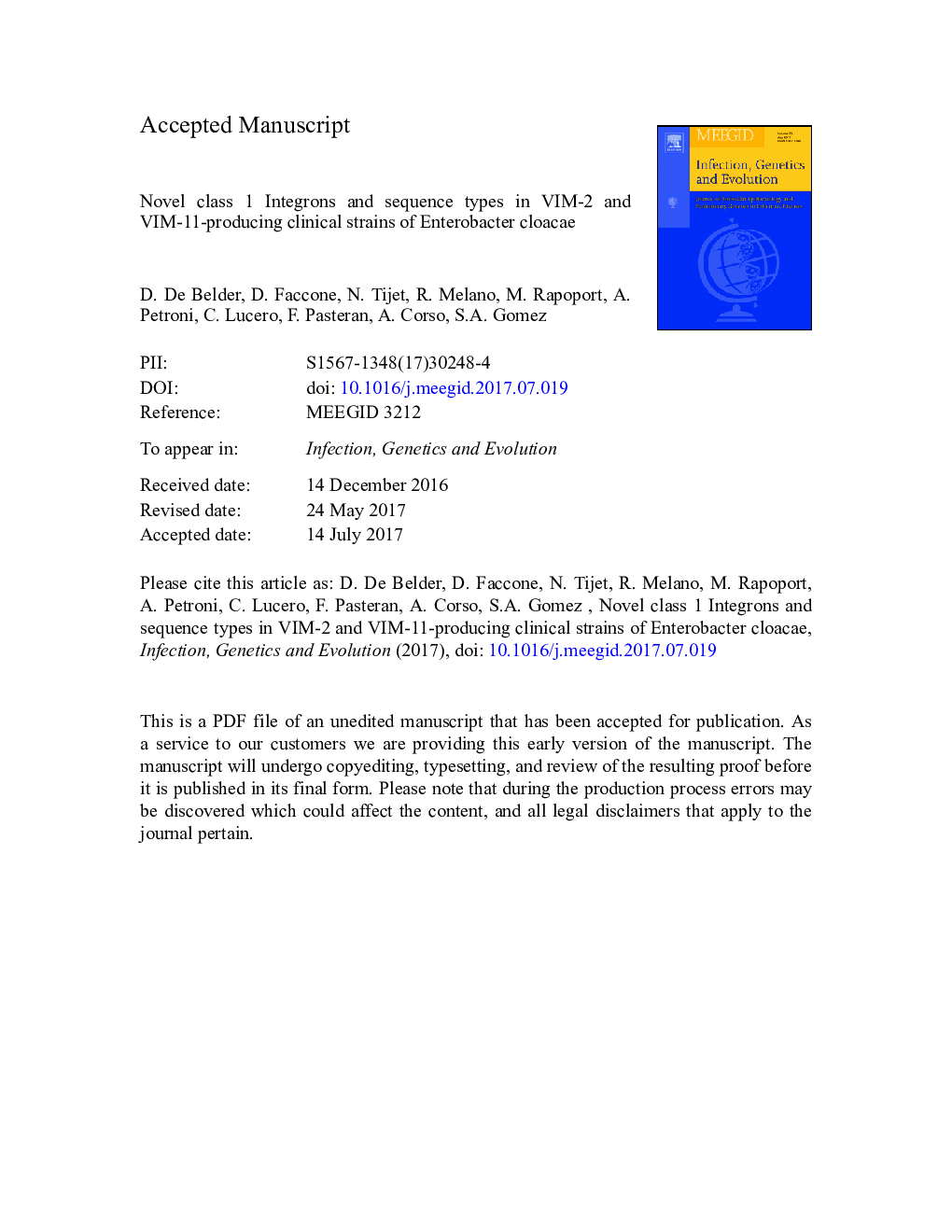| Article ID | Journal | Published Year | Pages | File Type |
|---|---|---|---|---|
| 5590575 | Infection, Genetics and Evolution | 2017 | 21 Pages |
Abstract
All VIM-producing Enterobacteriaceae (six Enterobacter cloacae) submitted to the Argentinian Reference Laboratory in Antimicrobial Resistance in the period 2008-13 were characterized. The isolates were referred from 6 nosocomial institutions located in 5 different cities across the country. All isolates showed carbapenem disk diffusion inhibition zones â¤Â 22 mm and synergism between a carbapenem disk and EDTA/SMA. The six isolates were PCR positive for blaVIM. Imipenem MICs were â¤Â 1 to 8 μg/ml. Typing by PFGE and MLST distinguished six pulsotypes and sequence types with blaVIM located on novel class 1 integron arrays: ECL-1: ST182, In883; ECL-2, ST90, In885; ECL-3, ST88, In346 with blaVIM-11; ECL-4, ST184, In900; ECL-5, ST749-new, In900; ECL-6, ST91 and uncharacterized In. Only ECL-2 was able to transfer blaVIM-2 to E. coli J53 by biparental conjugation. blaVIM was located in plasmids of 53-82 Kb and in the chromosome (ECL-1 and ECL-5). The diversity of clones, class 1 integrons, plasmids and location of blaVIM, reveals the plasticity of the genetic elements described and highlights the importance of surveillance programs as tools to identify the transmission of these highly resistant metallo-β-lactamase-producing Enterobacteriaceae.
Related Topics
Life Sciences
Agricultural and Biological Sciences
Ecology, Evolution, Behavior and Systematics
Authors
D. De Belder, D. Faccone, N. Tijet, R.G. Melano, M. Rapoport, A. Petroni, C. Lucero, F. Pasteran, A. Corso, S.A. Gomez,
